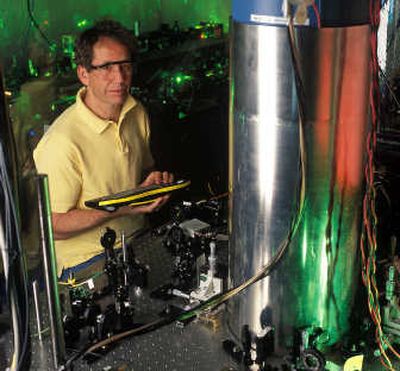Scientific measures ever more precise

WASHINGTON – As scientists learn how to make more exact measurements, they’re finding some surprises:
“The enthusiastic stomping of soccer fans after a goal creates a “footquake” on earthquake gauges 30 or more miles away.
“Florida is getting closer to Canada by about 1 inch every 36 years.
“Astronomers soon will be able to measure the sideways motion of a star trillions of miles away even though it’s moving at a speed of less than 10 inches an hour.
“It takes 61 trillionths of an ounce of force to make one atom hop over another.
As these examples show, new technologies are enabling researchers to measure things such as time, distance, temperature, weight, force, size and motion with a precision never before achieved.
Scientists say that these tools can help improve Global Positioning Systems, space navigation, wireless communications, national security sensors, biomedical techniques and basic science in physics, chemistry, astronomy and genetics, among other uses.
For instance, the ability to work with extremely minute intervals of time soon may allow scientists to freeze motion – like an ultrafast strobe light – to observe the behavior of electrons inside an atom, according to Philip Bucksbaum, a physicist at the Stanford Linear Accelerator Center in Stanford, Calif.
“The ability to measure time is reaching nearly ridiculous levels of precision and accuracy,” said Michael Baum, a spokesman for the National Institute of Standards and Technology in Gaithersburg, Md.
The institute is the federal government’s temple of metrology, the science of measurement.
A less precise notion of time was voiced by the late TV comedian Johnny Carson:
“The smallest interval of time known to man is that which occurs in Manhattan between the traffic signal turning green and the taxi driver behind you blowing his horn.”
No measurement can be 100 percent accurate. The laws of physics make such precision impossible, but scientists are edging closer.
For example, Michael Roukes, a physicist at the California Institute of Technology in Pasadena, managed to measure the weight of a single molecule with an uncertainty of less than a billionth of a trillionth of an ounce (0.000000000000000000001 ounce). Mighty close, but still not perfect.
Scientists have measured time to within a millionth of a billionth of a second by counting the “ticks” that a single atom of mercury emits.
A clock built by researchers at the National Institute of Standards and Technology is so accurate that it wouldn’t gain or lose one second if it ran for a billion years, according to Till Rosenband, an institute physicist in Boulder, Colo.
“It’s the world’s most accurate clock,” he said.
Ferenc Krausz, the director of the Max Planck Institute for Quantum Optics in Garching, Germany, discovered a technique that was able to distinguish events only a billionth of a billionth of a second apart.
“Such tools would constitute a space-time microscope that would make the motion of electrons visible in slow motion,” Krausz reported in Nature. The technology also could improve global positioning systems and wireless communications networks, as well as help in disease and biological research.